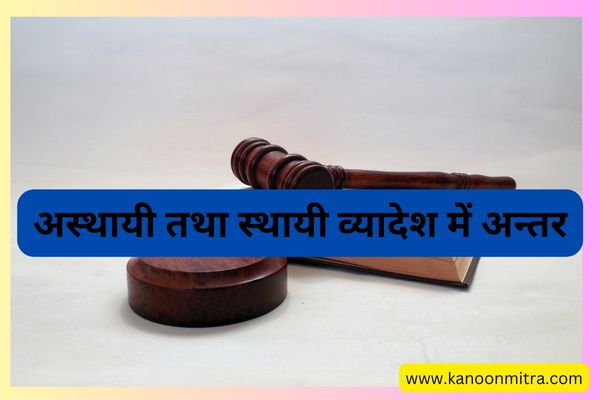IPC की धारा 378 — चोरी –
जो कोई किसी व्यक्ति के कब्जे में से, उस व्यक्ति की सम्मति के बिना कोई जंगम संपत्ति बेईमानी से ले लेने का आशय रखते हुए, वह संपत्ति ऐसे लेने के लिए हटाता है, वह चोरी करता है, यह कहा जाता है।
स्पष्टीकरण 1 – जब तक कोई वस्तु भूबद्ध रहती है, जंगम संपत्ति न होने से चोरी का विषय नहीं होती; किन्तु ज्यों ही वह भूमि से पृथक् की जाती है, वह चोरी का विषय होने योग्य हो जाती है।
स्पष्टीकरण 2 – हटाना, जो उसी कार्य द्वारा किया गया है जिससे पृथक्करण किया गया है, चोरी हो सकेगा।
स्पष्टीकरण 3 – कोई व्यक्ति किसी चीज का हटाना कारित करता है, यह कहा जाता है जब वह उस बाधा को हटाता है जो उस चीज को हटाने से रोके हुए हो या जब वह उस चीज को किसी दूसरी चीज से पृथक् करता है तथा जब वह वास्तव में उसे हटाता है।
स्पष्टीकरण 4 – वह व्यक्ति जो किसी साधन द्वारा किसी जीवजन्तु का हटाना कारित करता है, उस जीवजन्तु को हटाता है, यह कहा जाता है; और यह कहा जाता है कि वह ऐसी हर एक चीज को हटाता है जो इस प्रकार उत्पन्न की गई गति के परिणामस्वरूप उस जीवजन्तु द्वारा हटाई जाती है।
स्पष्टीकरण 5 – परिभाषा में वर्णित सम्मति अभिव्यक्त या विवक्षित हो सकती है, और वह या तो कब्जा रखने वाले व्यक्ति द्वारा, या किसी ऐसे व्यक्ति द्वारा, जो उस प्रयोजन के लिए अभिव्यक्त या विवक्षित प्राधिकार रखता है, दी जा सकती है।
दृष्टांत –
(क) य की सम्मति के बिना य के कब्जे में से एक वृक्ष बेईमानी से लेने के आशय से य की भूमि पर लगे हुए उस वृक्ष को क काट डालता है। यहां, ज्योंही क ने इस प्रकार लेने के लिए उस वृक्ष को पृथक् किया, उसने चोरी की |
(ख) क अपनी जेब में कुत्तों के लिए ललचाने वाली वस्तु रखता है, और इस प्रकार य के कुत्तों को अपने पीछे चलने के लिए उत्प्रेरित करता है। यहां, यदि क का आशय य की सम्मति के बिना य के कब्जे में से उस कुत्ते को बेईमानी से लेना हो, तो ज्यों ही य के कुत्ते ने क के पीछे चलना आरंभ किया, क ने चोरी की
(ग) मूल्यवान वस्तुओं की पेटी ले जाते हुए एक बैल क को मिलता है। वह उस बैल को इसलिए एक खास दिशा में हांकता है कि वे मूल्यवान वस्तुएं बेईमानी से ले सके ज्यों ही उस बैल ने गतिमान होना प्रारंभ किया, क ने मूल्यवान वस्तुएं चोरी की।
(घ) क, जो य का सेवक है और जिसे य ने अपनी प्लेट की देखरेख न्यस्त कर दी है, य की सम्मति के बिना प्लेट को लेकर बेईमानी से भाग गया। क ने चोरी की।
(ङ) य यात्रा को जाते समय अपनी प्लेट लौटकर आने तक, क को, जो एक भाण्डागारिक है, न्यस्त कर देता है क उस प्लेट को एक सुनार के पास ले जाता है और वह प्लेट बेच देता है। यहां वह प्लेट य के कब्जे में नहीं थी, इसलिए वह य के कब्जे में से नहीं ली जा सकती थी और क ने चोरी नहीं की है, चाहे उसने आपराधिक न्यासभंग किया हो।
(च) जिस गृह पर य का अधिभोग है उसके मेज पर य की अंगूठी क को मिलती है। यहां, वह अंगूठी य के कब्जे में है, और यदि क उसको बेईमानी से हटाता है, तो वह चोरी करता है।
(छ) क, को राजमार्ग पर पड़ी हुई अंगूठी मिलती है, जो किसी व्यक्ति के कब्जे में नहीं है। क ने उसके ले लेने से चोरी नहीं की है, भले ही उसने संपत्ति का आपराधिक दुर्विनियोग किया हो।
(ज) य के घर में मेज पर पड़ी हुई य की अंगूठी क देखता है। तलाशी और पता लगने के भय से उस अंगूठी का तुरन्त दुर्विनियोग करने का साहस न करते हुए क उस अंगूठी को ऐसे स्थान पर, जहां से उसका य को कभी भी मिलना अति अनधिसम्भाव्य है, इस आशय से छिपा देता है कि छिपाने के स्थान से उस समय ले ले और बेच दे जबकि उसका खोया जाना याद न रहे यहां क ने, उस अंगूठी को प्रथम बार हटाते समय चोरी की है।
(झ) य को, जो एक जौहरी है, क अपनी घड़ी समय ठीक करने के लिए परिदत्त करता है। य उसको अपनी दुकान पर ले जाता है। क, जिस पर उस जौहरी का कोई ऐसा ऋण नहीं है, जिसके लिए कि वह जौहरी उस घड़ी को प्रतिभूति के रूप में विधिपूर्वक रोक सके, खुले तौर पर उस दुकान में घुसता है, य के हाथ से अपनी घड़ी बलपूर्वक ले लेता है, और उसको ले जाता है। यहां क ने भले ही आपराधिक अतिचार और हमला किया हो, उसने चोरी नहीं की है,क्योकि जो कुछ भी उसने किया बेईमानी से नहीं किया।
(ञ) यदि उस घड़ी की मरम्मत के संबंध में य को क से धन शोध्य है, और यदि य उस घड़ी को उस ऋण की प्रतिभूति के रूप में विधिपूर्वक रखे रखता है और क उस घड़ी को य के कब्जे में से इस आशय से ले लेता है कि य को उसके ऋण की प्रतिभूति रूप उस सम्पत्ति से वंचित कर दे तो उसने चोरी की है क्योंकि वह उसे बेईमानी से लेता है।
(ट) और यदि क अपनी घड़ी य के पास पणयम करने के बाद घड़ी के बदले लिए गए ऋण को चुकाए बिना उसे य के कब्जे में से य की सम्मत्ति के बिना ले लेता है, तो उसने चोरी की है, यद्यपि वह घड़ी उसकी अपनी ही संपत्ति है, क्योंकि वह उसे बेईमानी से लेता है।
(ठ) क एक वस्तु को उस समय तक रख लेने के आशय से जब तक कि उसके प्रत्यावर्तन के लिए पुरस्कार के रूप में उसे य से धन अभिप्राप्त न हो जाए, य की सम्मति के बिना य के कब्जे में से लेता है। यहां क बेईमानी से लेता है, इसलिए क ने चोरी की।
(ड) क, जो य का मित्र है, य की अनुपस्थिति में य के पुस्तकालय में जाता है और य की अभिव्यक्त सम्मति के बिना एक पुस्तक केवल पढ़ने के लिए और वापस करने के आशय से ले जाता है। यहां, यह अधिसंभाव्य है कि क ने यह विचार किया हो कि पुस्तक उपयोग में लाने के लिए उसको य की विवक्षित सम्मति प्राप्त है। यदि क का यह विचार था, तो क ने चोरी नहीं की है।
(ढ) य की पत्नी से क खैरात मांगता है। वह क को धन, भोजन और कपड़े देती है, जिनको क जानता है कि वे उसके पति य के हैं। यहां, यह अधिसंभाव्य है कि क का यह विचार हो कि य की पत्नी को भिक्षा देने का प्राधिकार है। यदि क का यह विचार था, तो क ने चोरी नहीं की है।
(ण) क, य की पत्नी का जार है। वह क को एक मूल्यवान सम्पत्ति देती है, जिसके संबंध में क यह जानता है। कि वह उसके पति य की है, और वह ऐसी संपत्ति है, जिसको देने का प्राधिकार उसे य से प्राप्त नहीं है। यदि क उस संपत्ति को बेईमानी से लेता है, तो वह चोरी करता है।
(त) य की सम्पत्ति की अपनी स्वयं की सम्पत्ति होने का सद्भावपूर्वक विश्वास करते हुए ख के कब्जे में से उस संपत्ति को क ले लेता है। यहां, क बेईमानी से नहीं लेता, इसलिए वह चोरी नहीं करता।
IPC Section 378 — Theft –
Whoever, intending to take dishonestly any movable property out of the possession of any person without that person’s consent, moves that property in order to such taking, is said to commit theft.
Explanation 1 – A thing so long as it is attached to the earth, not being movable property, is not the subject of theft; but it becomes capable of being the subject of theft as soon as it is severed from the earth.
Explanation 2 – A moving effected by the same act which effects the severance may be a theft.
Explanation 3 – A person is said to cause a thing to move by removing an obstacle which prevented it from moving or by separating it from any other thing, as well as by actually moving it.
Explanation 4 – A person, who by any means causes an animal to move, is said to move that animal, and to move everything which, in consequence of the motion so caused, is moved by that animal.
Explanation 5 — The consent mentioned in the definition may be express or implied, and may be given either by the person in possession, or by any person having for that purpose authority either express or implied.
Illustrations –
(a) A cuts down a tree on Z’s ground, with the intention of dishonestly taking the on tree out of Z’s possession without Z’s consent. Here, as soon as A has severed the tree in order to such taking, he has committed theft.
(b) A puts a bait for dogs in his pocket, and thus induces Z’s dog to follow it. Here, if A’s intention be dishonestly to take the dog out of Z’s possession without Z’s consent. A has committed theft as soon as Z’s dog has begun to follow A.
(c)A meets a bullock carrying a box of treasure. He drives the bullock in a certain direction, in order that he may dishonestly take the treasure. As soon as the bullock begins to move, A has committed theft of the treasure.
(d) A, being Z’s servant, and entrusted by Z with the care of Z’s plate, dishonestly runs away with the plate, without Z’s consent. A has committed theft.
(e) Z, going on a journey, entrusts his plate to A, the keeper of the warehouse, till Z shall return. A carries the plate to a goldsmith and sells it. Here the plate was not in Z’s possession. It could not therefore be taken out of Z’s possession, and A has not committed theft, though he may have committed criminal breach of trust.
(f) A finds a ring belonging to Z on a table in the house which Z occupies. Here the ring is in Z’s possession, and if A dishonestly removes it, A commits theft.
(g) A finds a ring lying on the highroad, not in the possession of any person. A by taking it, commits no theft, though he may commit criminal misappropriation of property.
(h) A sees a ring belonging to Z lying on a table in Z’s house. Not venturing to misappropriate the ring immediately for fear of search and detection, A hides the ring in a place where it is highly improbable that it will ever be found by Z, with the intention of taking the ring from the hiding place and selling it when the loss is forgotten. Here A, at the time of first moving the ring, commits theft.
(i) A delivers his watch to Z, a jeweller, to be regulated. Z carries it to his shop. A, not owing to the jeweller any debt for which the jeweller might lawfully detain the watch as a security, enters the shop openly, takes his watch by force out of Z’s hand, and carries it away. Here A, though he may have committed criminal trespass and assault, has not committed theft, inasmuch as what he did was not done dishonestly.
(j) If A owes money to Z for repairing the watch, and if Z retains the watch lawfully as a security for the debt, and A takes the watch out of Z’s possession, with the intention of depriving Z of the property as a security for his debt, he commits theft, inasmuch as he takes it dishonestly. IPC की धारा 378
(k) Again, if A, having pawned his watch to Z, takes it out of Z’s possession without Z’s consent, not having paid what he borrowed on the watch, he commits theft, though the watch is his own property in as much as he takes it dishonestly.
(l) A takes an article belonging to Z out of Z’s possession, without Z’s consent, with the intention of keeping it until he obtains money from Z as a reward for its restoration. Here A takes dishonestly; A has therefore committed theft.
(m) A, being on friendly terms with Z, goes into Z’s library in Z’s absence, and takes away a book without Z’s express consent for the purpose merely of reading it, and with the intention of returning it. Here, it is probable that A may have conceived that he had Z’s implied consent to use Z’s book. If this was A’s impression, A has not committed theft. IPC की धारा 378
(n) A asks charity from Z’s wife. She gives A money, food and clothes, which A knows to belong to Z her husband. Here it is probable that A may conceive that Z’s wife is authorised to give away alms. If this was A’s impression, A has not committed theft.
(o) A is the paramour of Z’s wife. She gives a valuable property, which A knows to belong to her husband Z, and to be such property as she has no authority from Z to give. If A takes the property dishonestly, he commits theft. IPC की धारा 378
(p) A, in good faith, believing property belonging to Z to be A’s own property, takes that property out of B’s possession. Here, as A does not take dishonestly, he does not commit theft.
IPC की धारा 378 IPC की धारा 378 IPC की धारा 378




